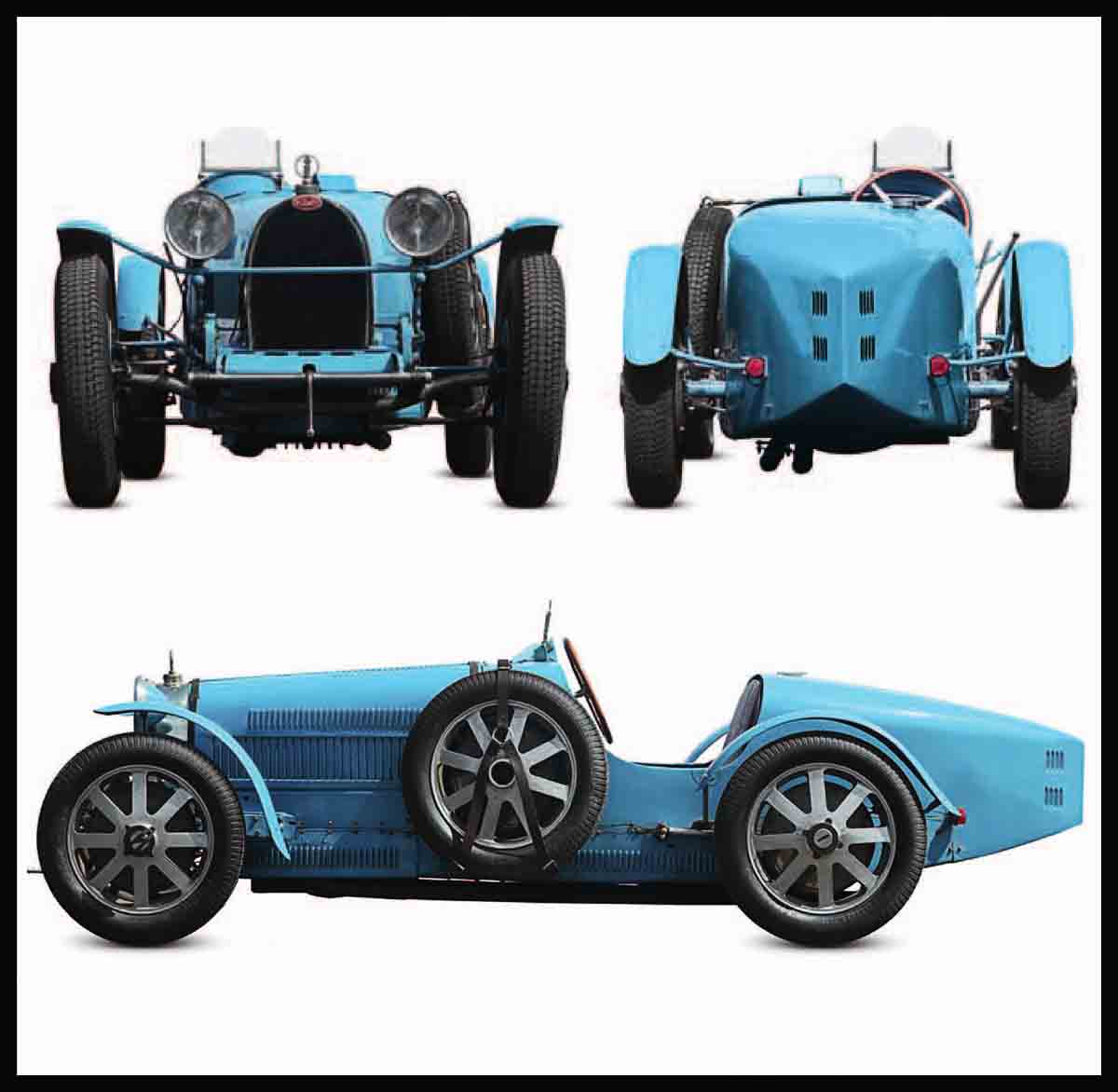
Bugatti Type 35B
The Type 35 Bugatti was emblematic of France’s racing prowess in the 1920s. In motor sport, it was the French equivalent of the legendary British Bentley. The Bugatti was the product of an engineer born into a family of artists: For Ettore Bugatti, aesthetic perfection was as important as technical flair. The result was a car of extraordinary beauty in all its details, conservative in some aspects, but of proven effectiveness on the race circuit.
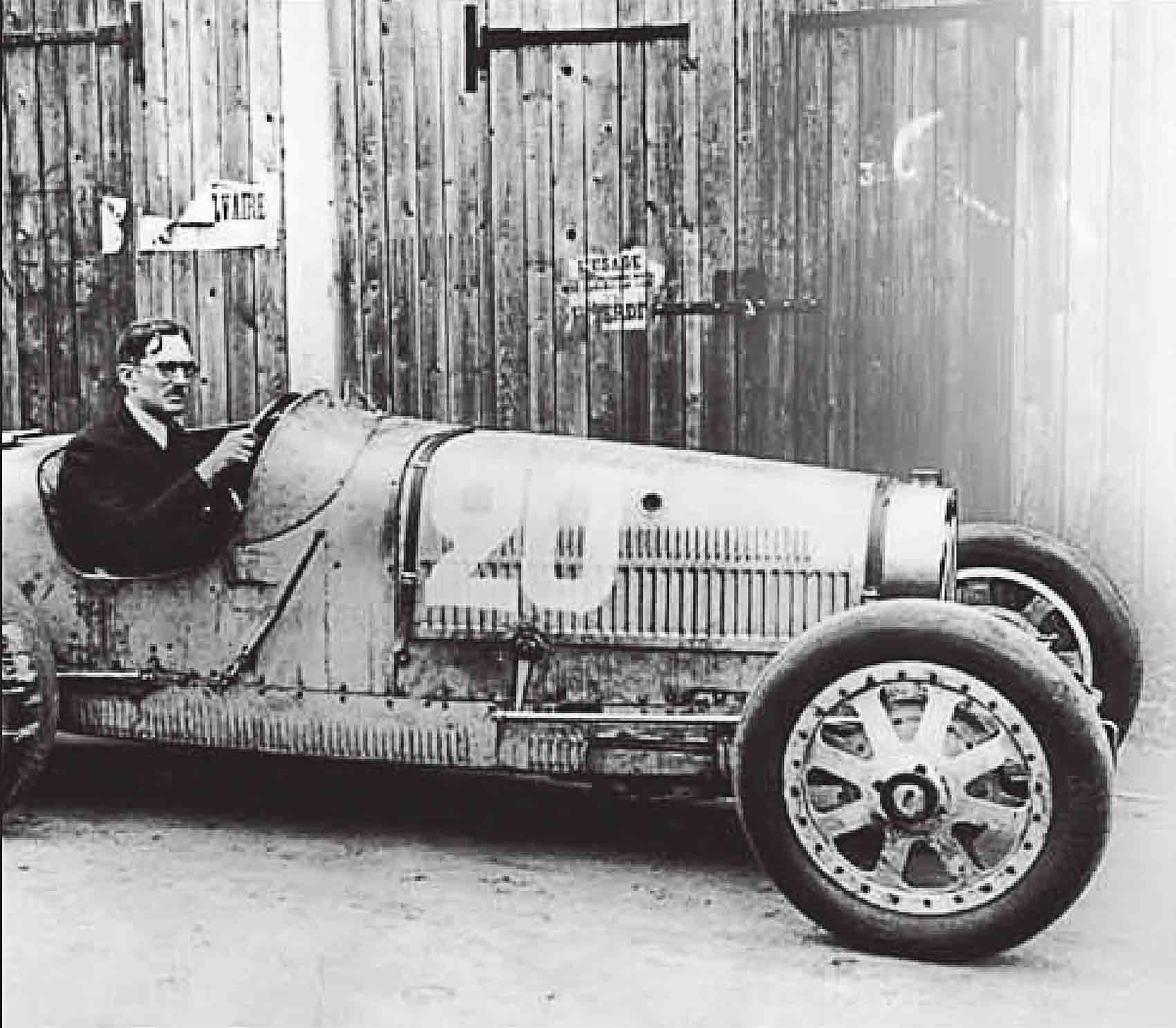
THE BUGATTI TYPE 35 was—and is—beautiful. But it also earned its keep: In its 1924-1931 lifespan, it claimed 2,000 racing successes. Many of these can be attributed to the supercharged 2,262 cc 35B. The car is instantly recognizable by its eight-spoke, cast-aluminum wheels. Lightweight and helping to boost brake-cooling, these components made history because they were the first alloy wheels fitted as standard to a production car. The un-supercharged 1,991 cc Type 35 and the Type 35A came with less elaborate 2-liter engines and wire wheels. The Type 35 was a family of cars, and included an unblown 1,493 cc racer, a supercharged 1,100 cc racer, and various other sub-breeds. There was also a four-cylinder sister car, the Type 37, of which 290 were made. The Type 35 was, however, the more popular, with 336 produced. Of these, a healthy 139 were the more tame 35A, the so-called Tecla model. But it is the blown T35B—with its tearing-calico engine note—that stirs the blood the most.
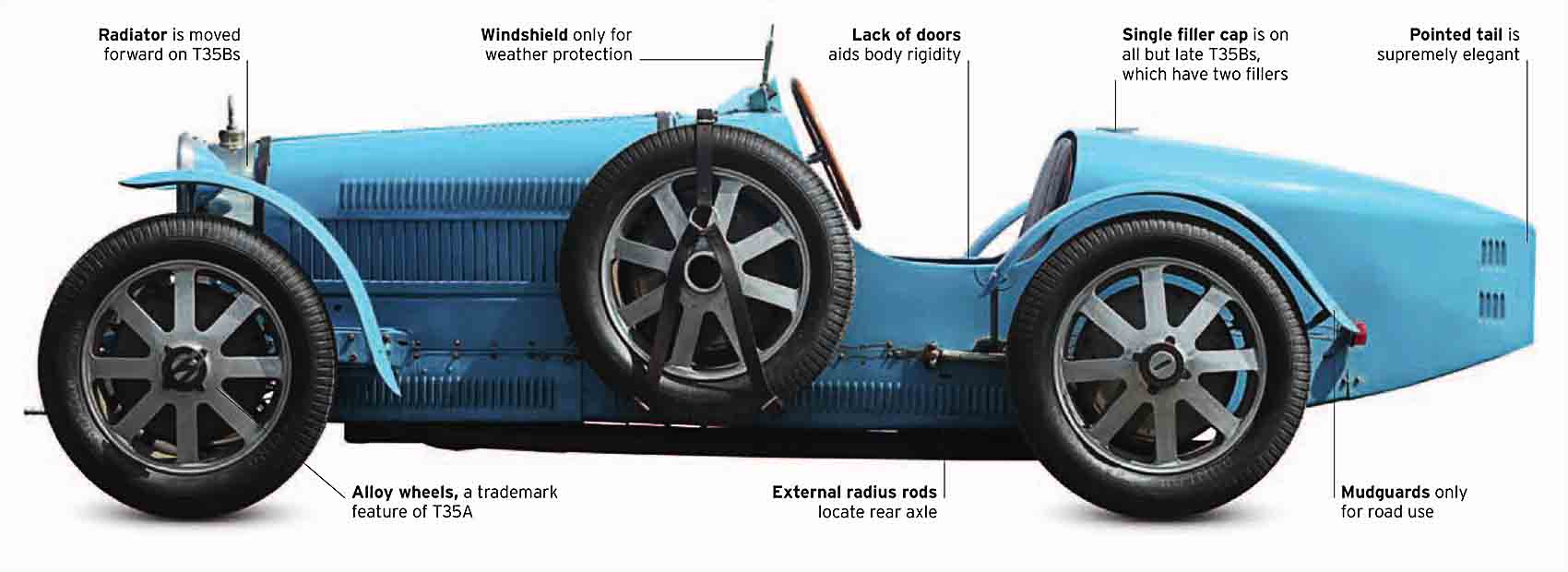
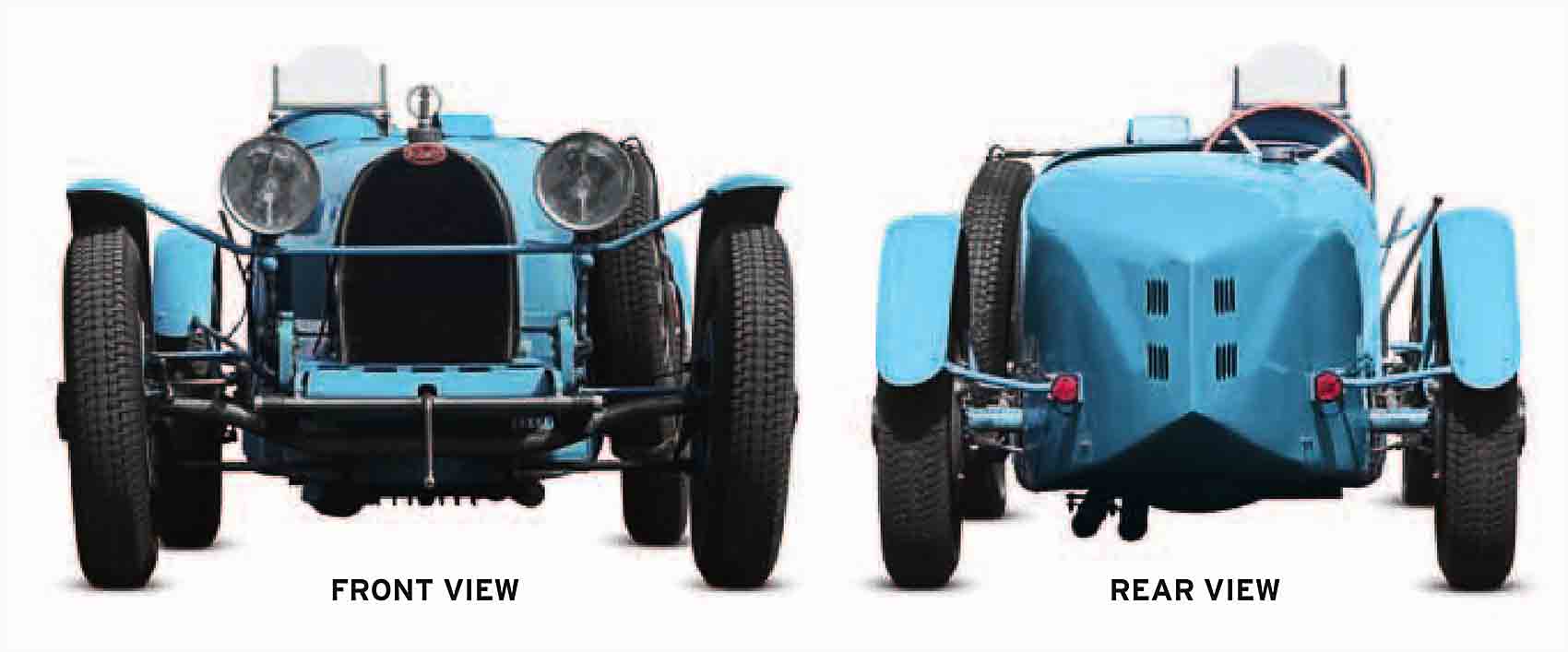
SPECIFICATIONS
| Model | Bugatti Type 35B, 1927-30 |
| Assembly | Molsheim, France |
| Production | 38 |
| Construction | Separate chassis; aluminum panels |
| Engine | 2,262 cc, ohc straight eight-cylinder |
| Power output | 123 bhp at 5,500 rpm |
| Transmission | Four-speed manual, unsynchronized |
| Suspension | Semi-elliptic front; rear reversed-¼ |
| Brakes | Drums front and rear, cable-operated |
| Maximum speed | 127 mph (204 km/h) |
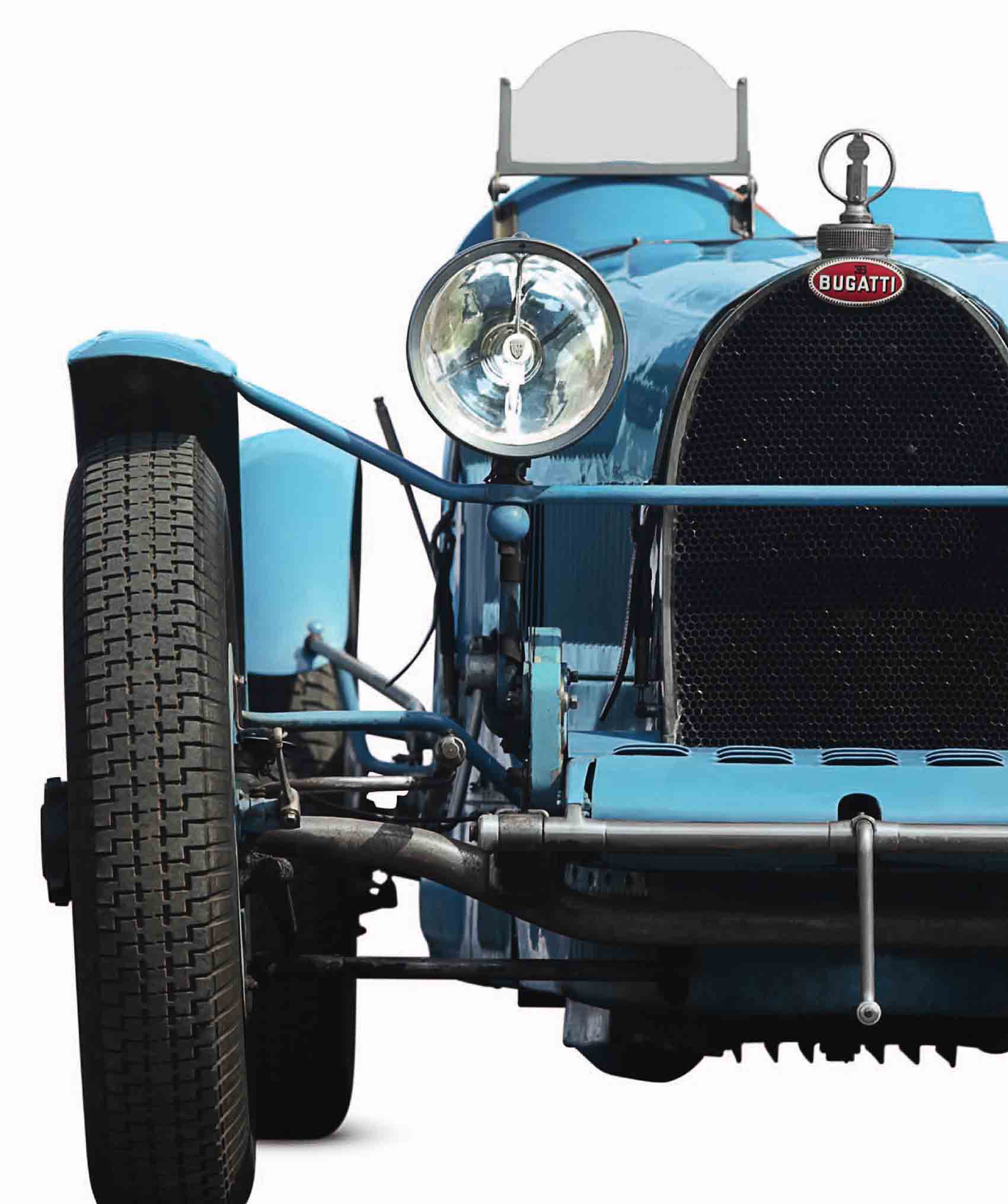
True finesse
The Bugatti’s lithe lines are hard to fault. The supercharged 35B and 35C have a wider radiator, moved farther forward, as opposed to the more slender radiator of the Type 35, the roadgoing wire-wheeled Type 35A, and the four-cylinder Type 37. The tubular axle, through which the springs pass, is a Bugatti trademark, and the horseshoe-shaped grille is a reflection of Bugatti’s love of all things equestrian.
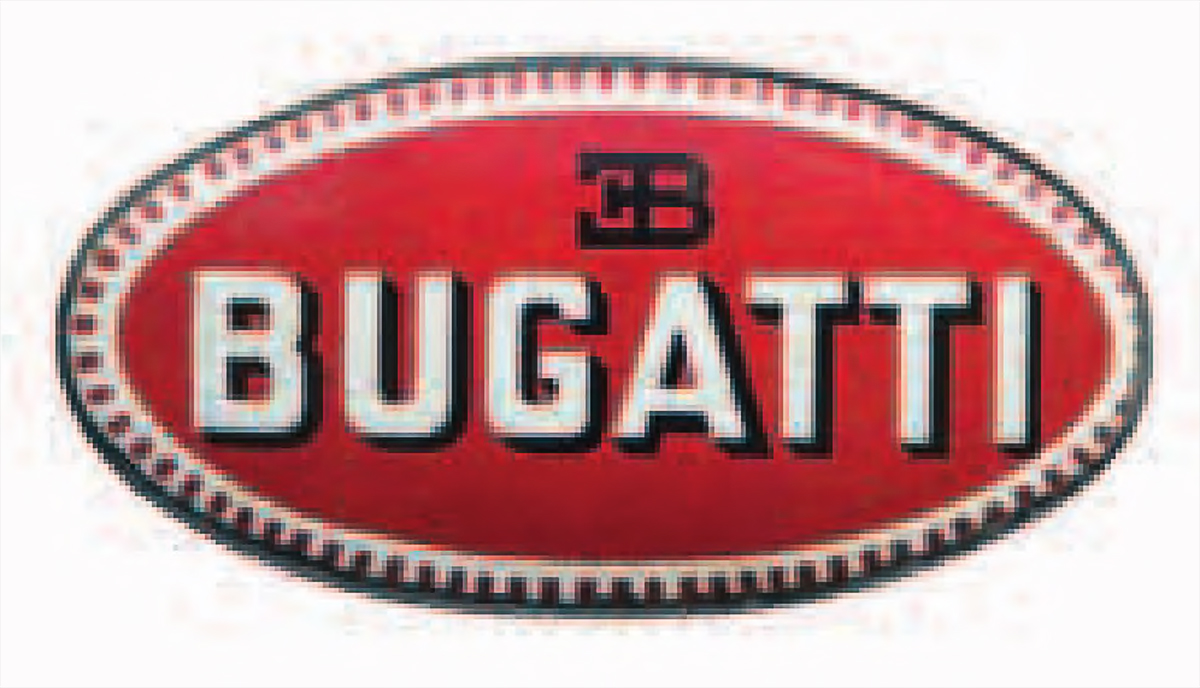
Artistry from Molsheim
The elliptical logo is found on all Bugattis from 1910 onward and bears the initials of Ettore Bugatti. It was used until the end of Bugatti car production in the early 1950s, and was revived when the marque resurfaced in the 1990s.
THE EXTERIOR
The exquisitely detailed but stark bodywork of the Type 35 is all about function, but with a finesse that makes one recall Ettore Bugatti’s supposed remark that the rival Bentley was a high-speed truck. Arguably the four-cylinder Type 37 is even more pleasing, but it lacks the gutsy muscle of the Type 35. Bugatti had a sure eye for a car’s fines, a gift he passed on to his son Jean, who styled future models.
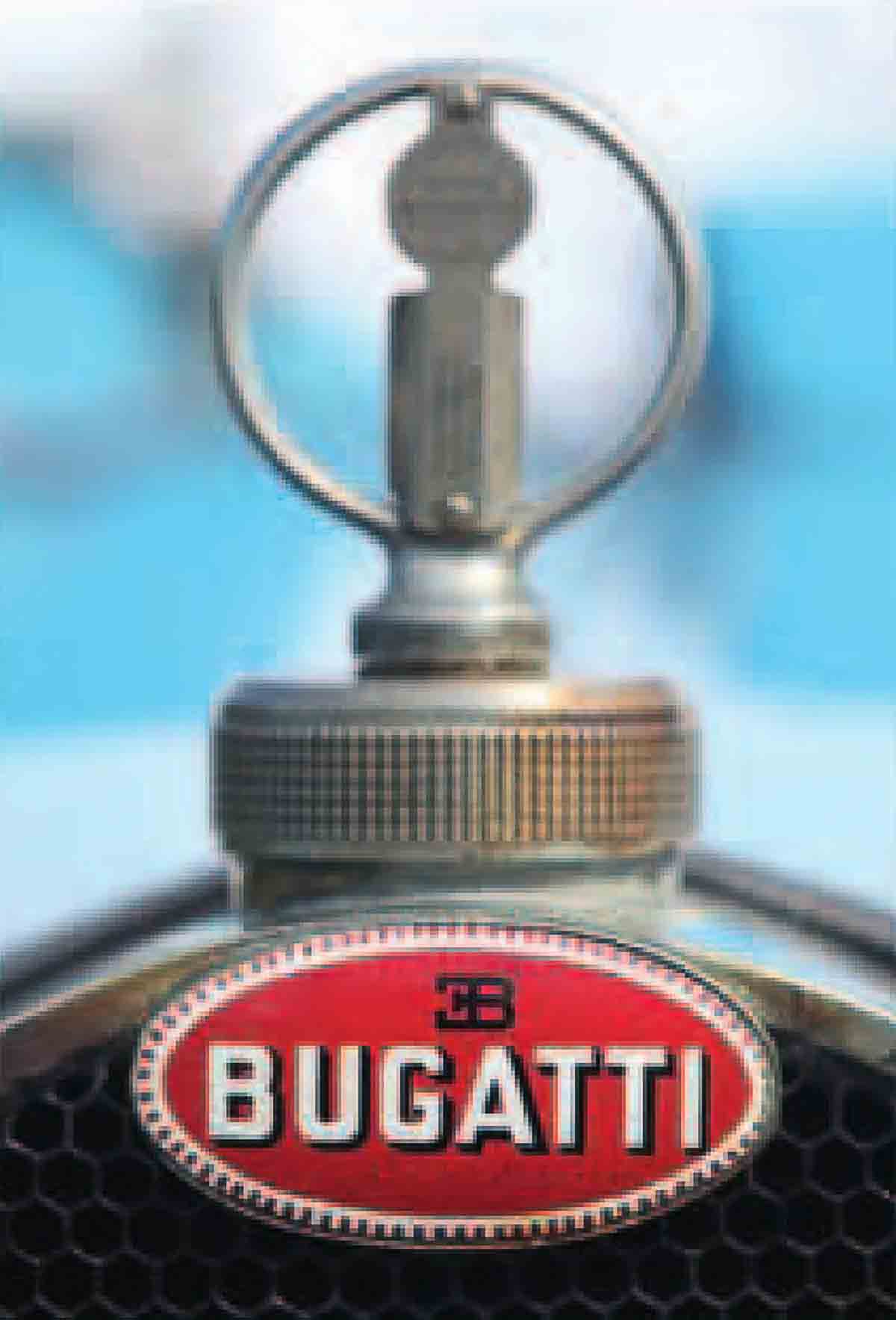
Radiator-top water-temperature gauge
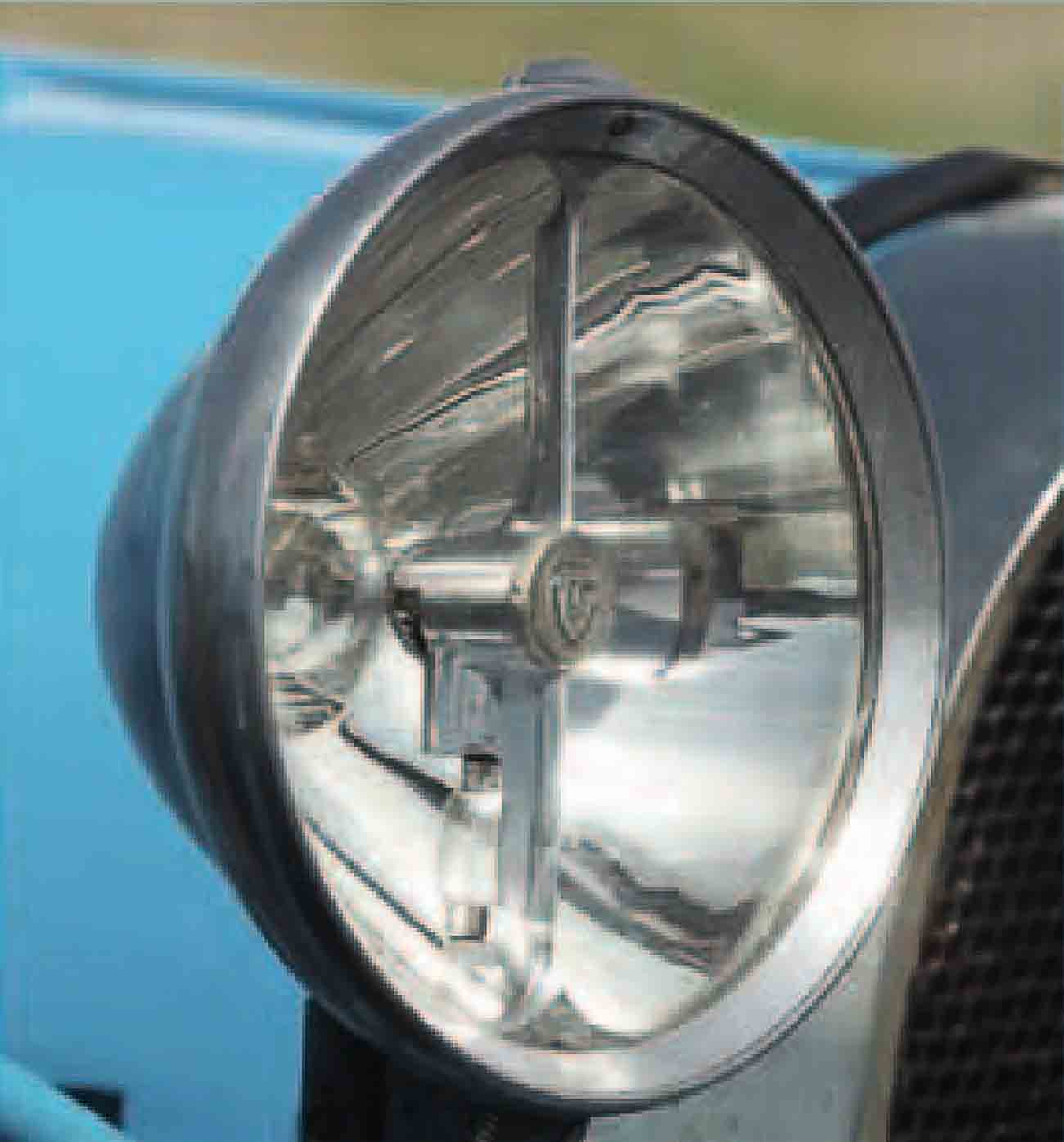
Free standing headlights typical of 1920s French cars
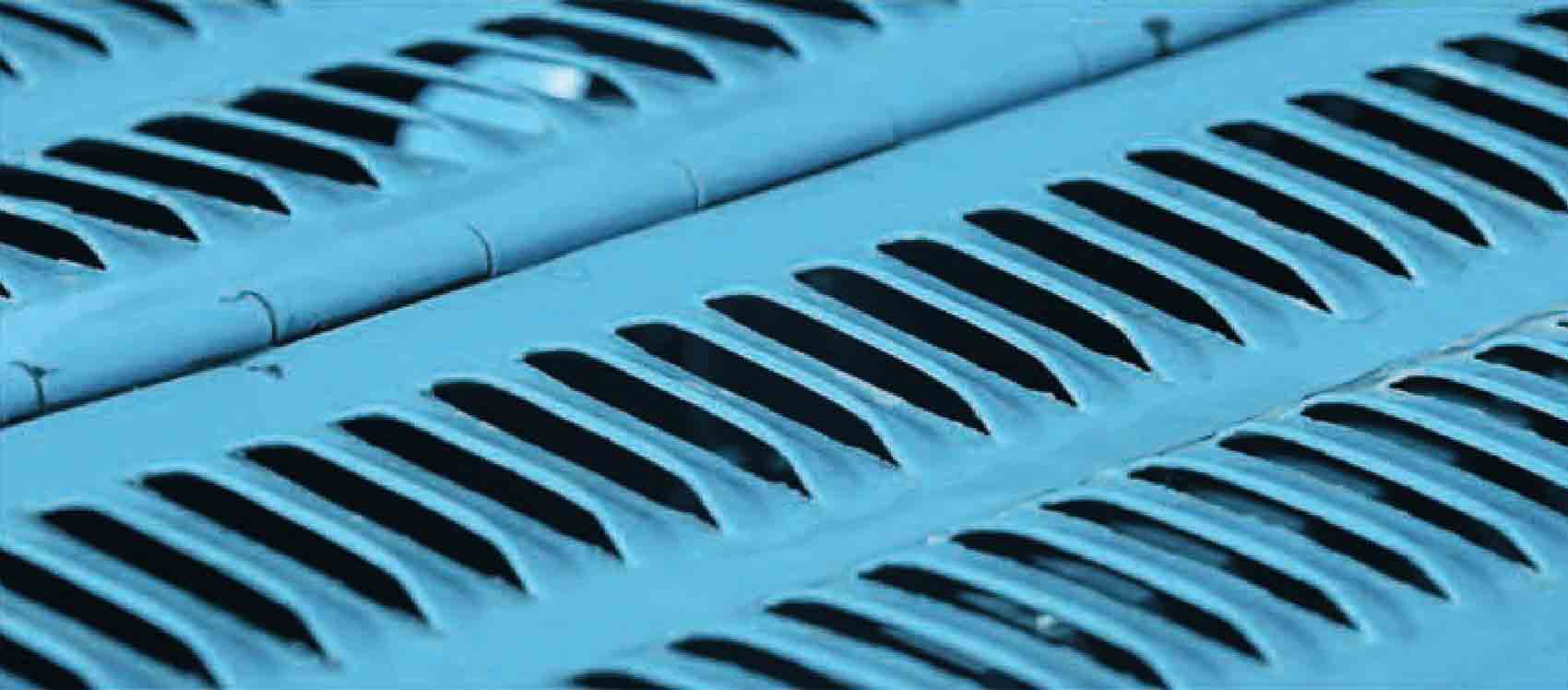
Type 35 is loaded with louvers
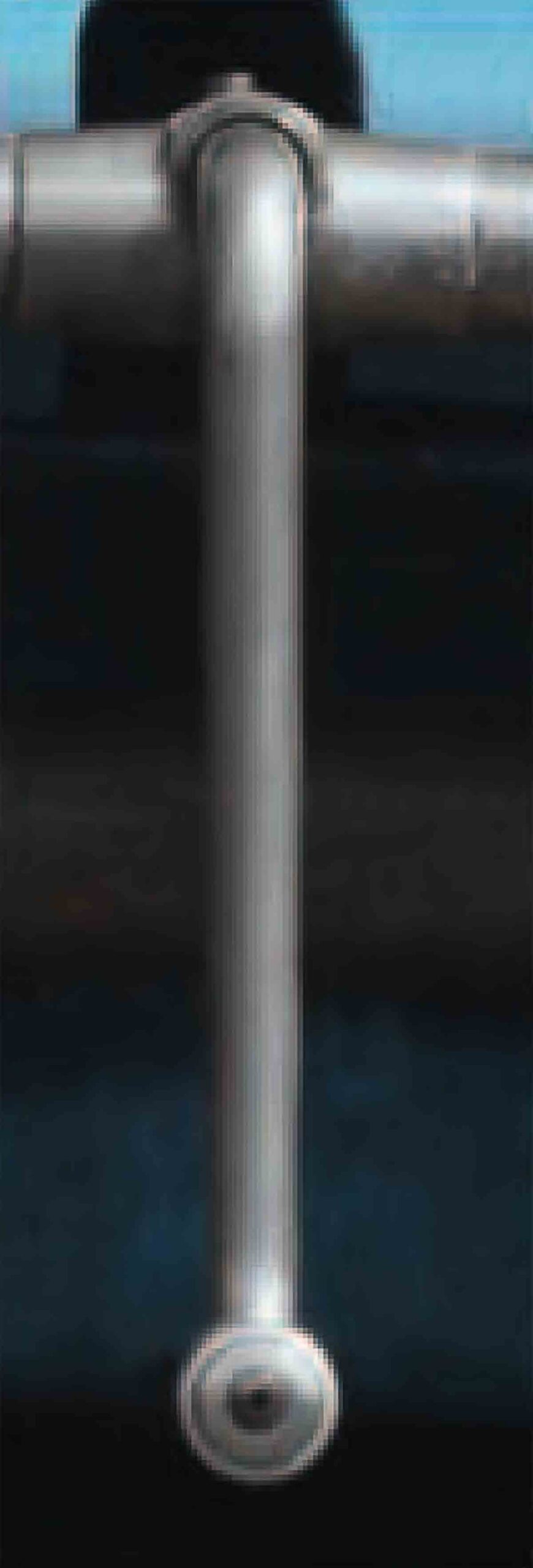
Only hand-starting on early T35s
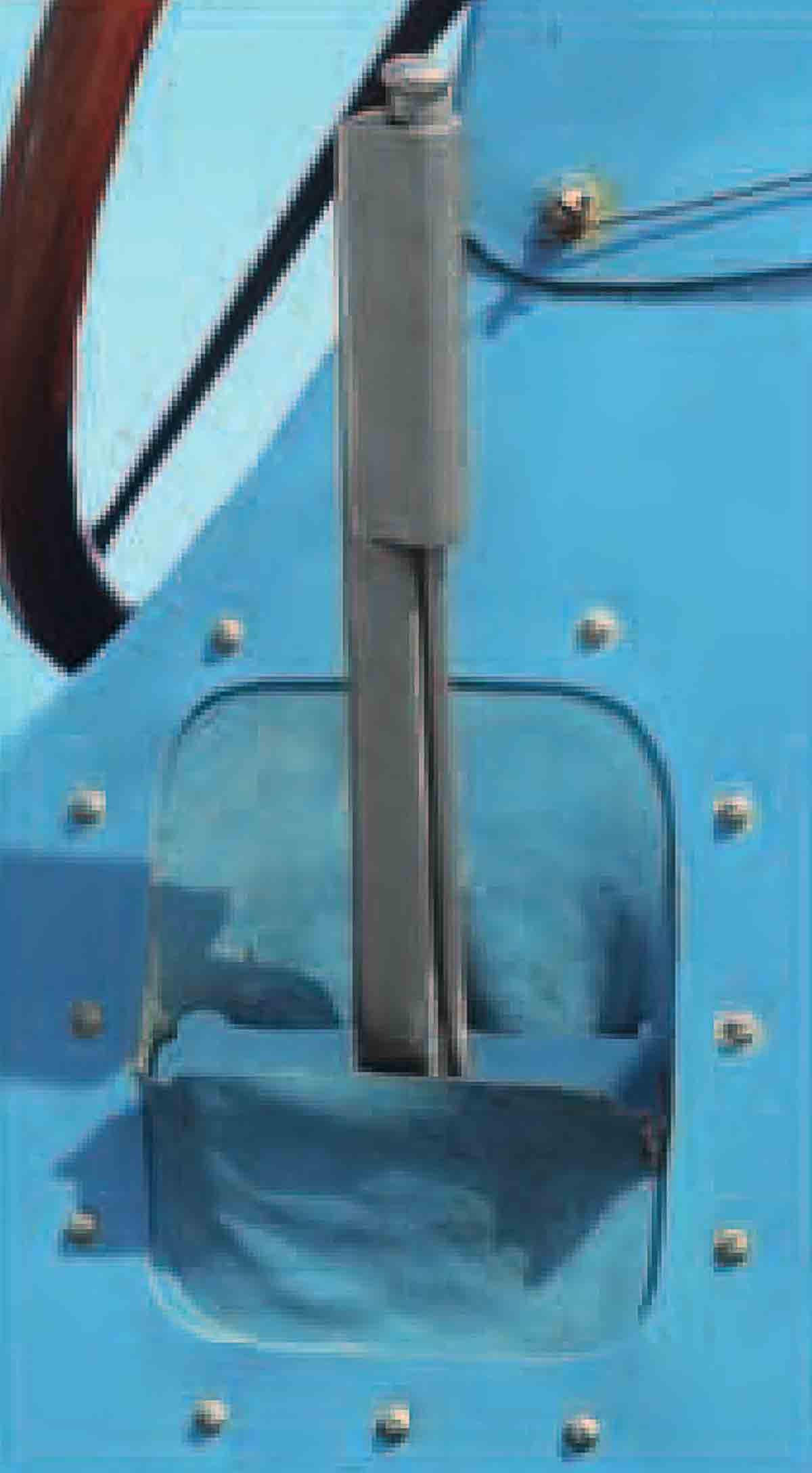
Gear lever exits through slot in bodywork
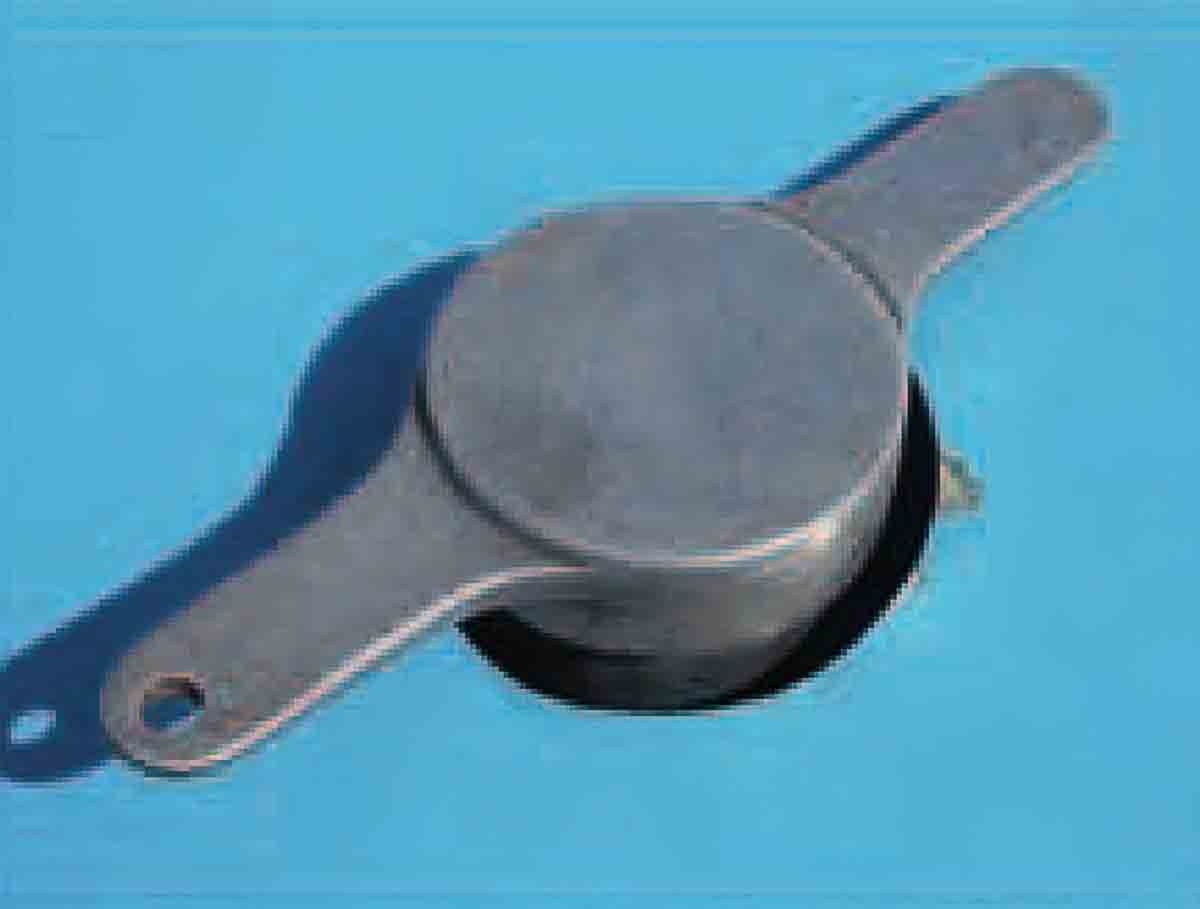
Eared filler cap
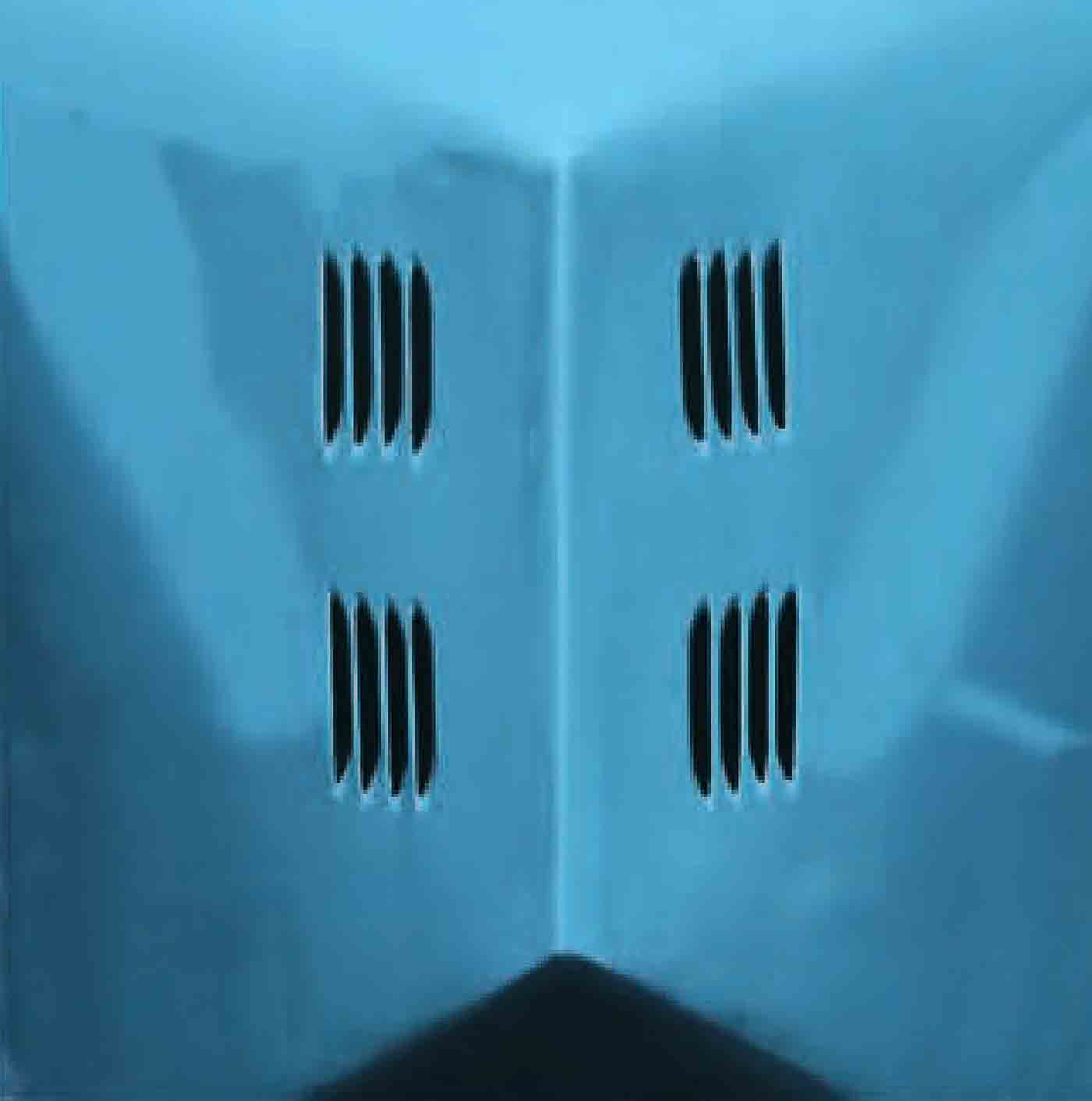
Louvered tail

Securing wire
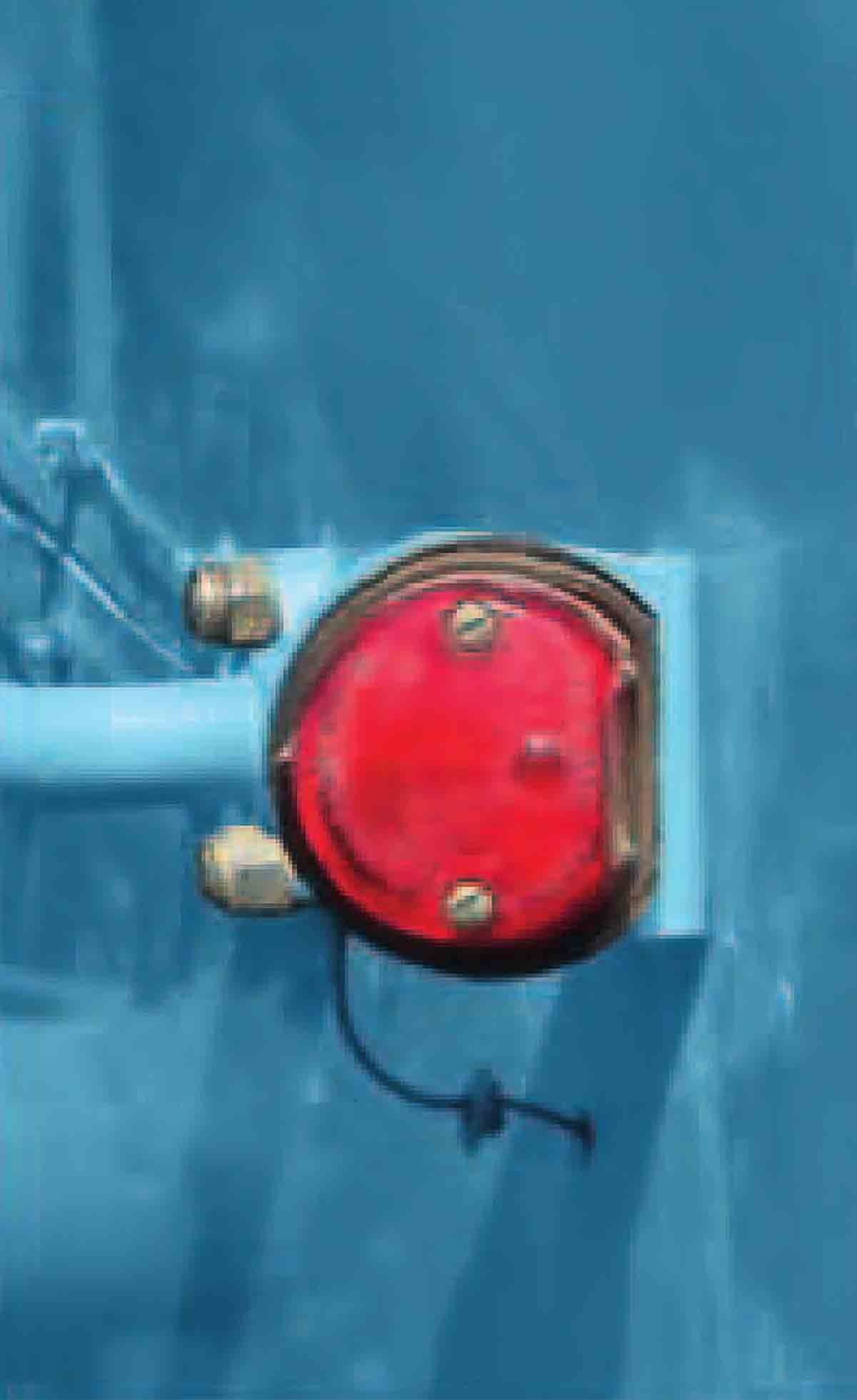
Tail lights, a later addition
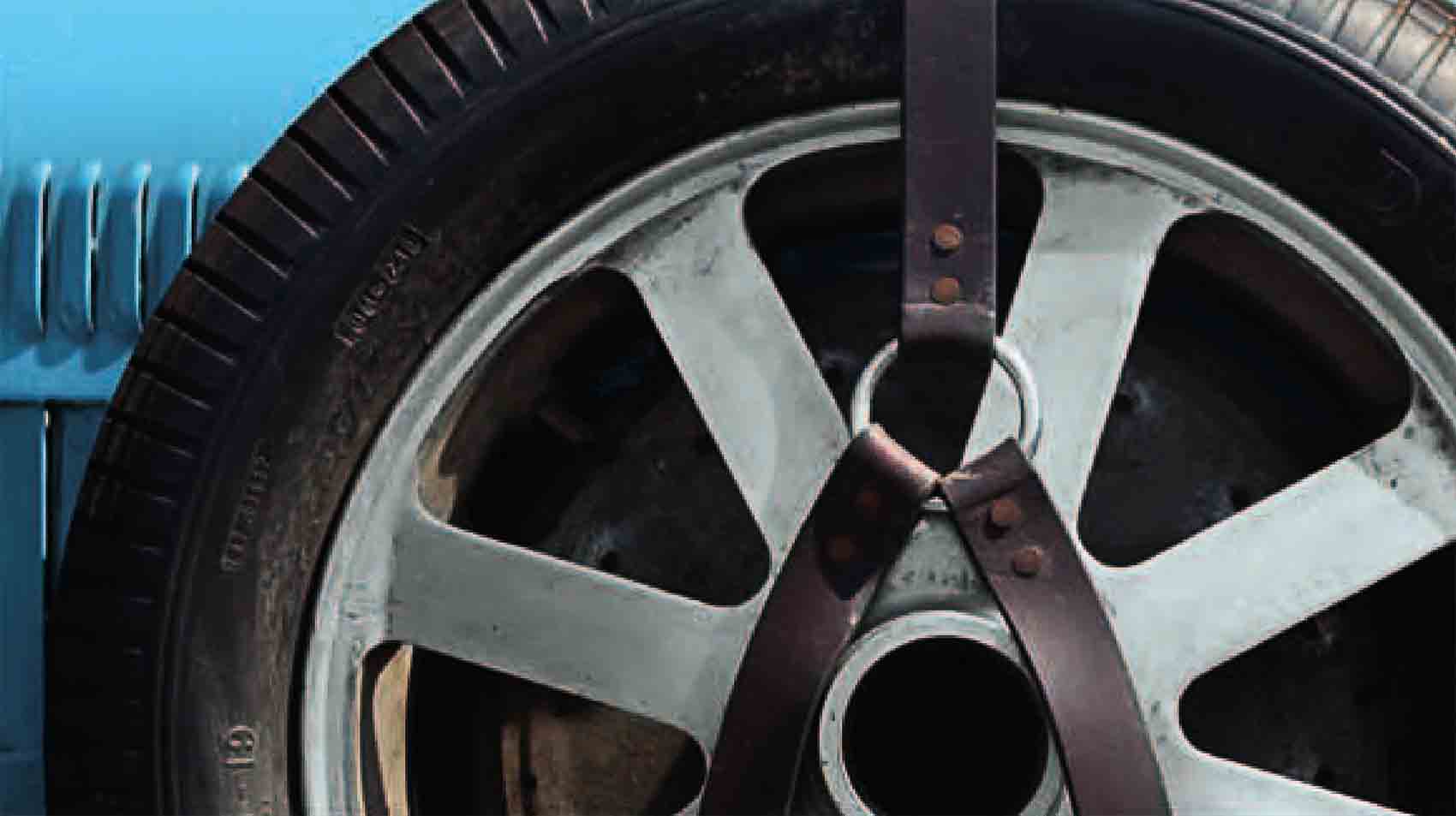
Spare tire
THE INTERIOR
This is the cockpit of a racing car, so creature comforts are absent while space is at a premium. The mechanicals are exposed in the car’s footwells, leading to the presence of leaking oil, not surprising for a racing car where function and weight-saving is more important than comfort. The engine-turned aluminum dashboard is a typical finish of the time, used to good effect by Bugatti.
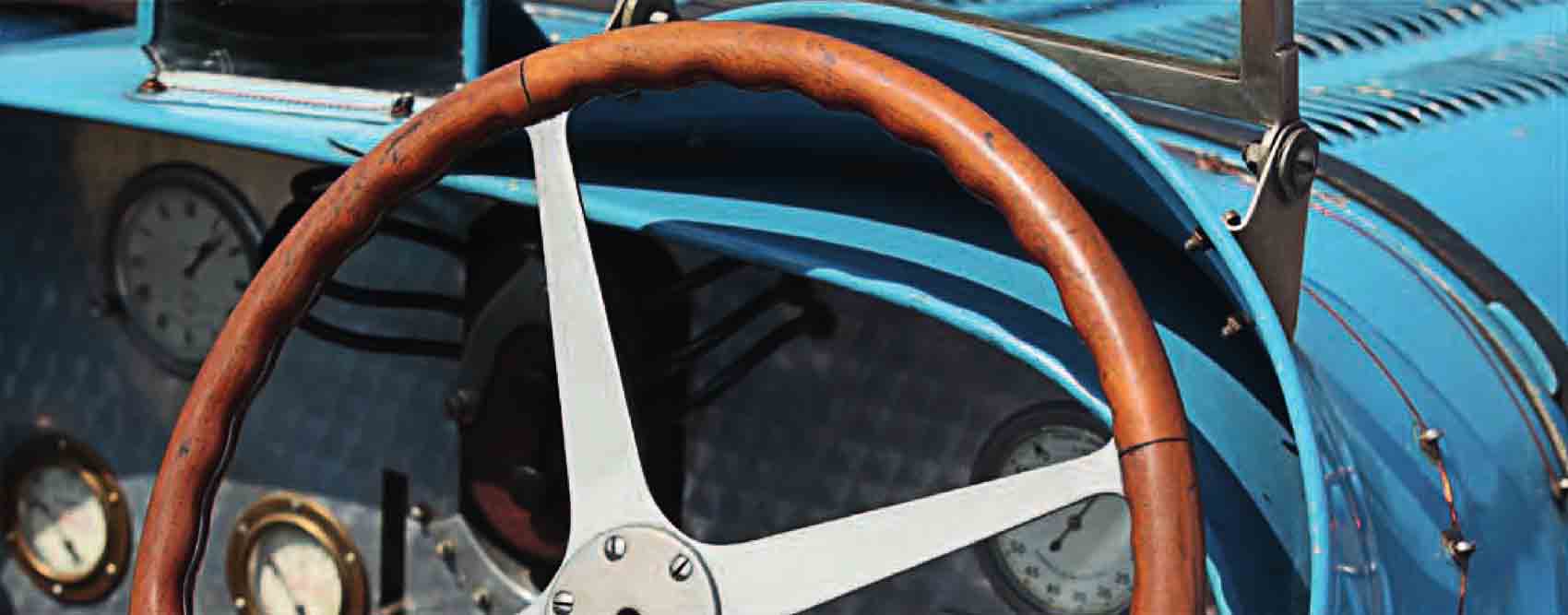
Wood-rim, four-spoke steering wheel is Bugatti trademark
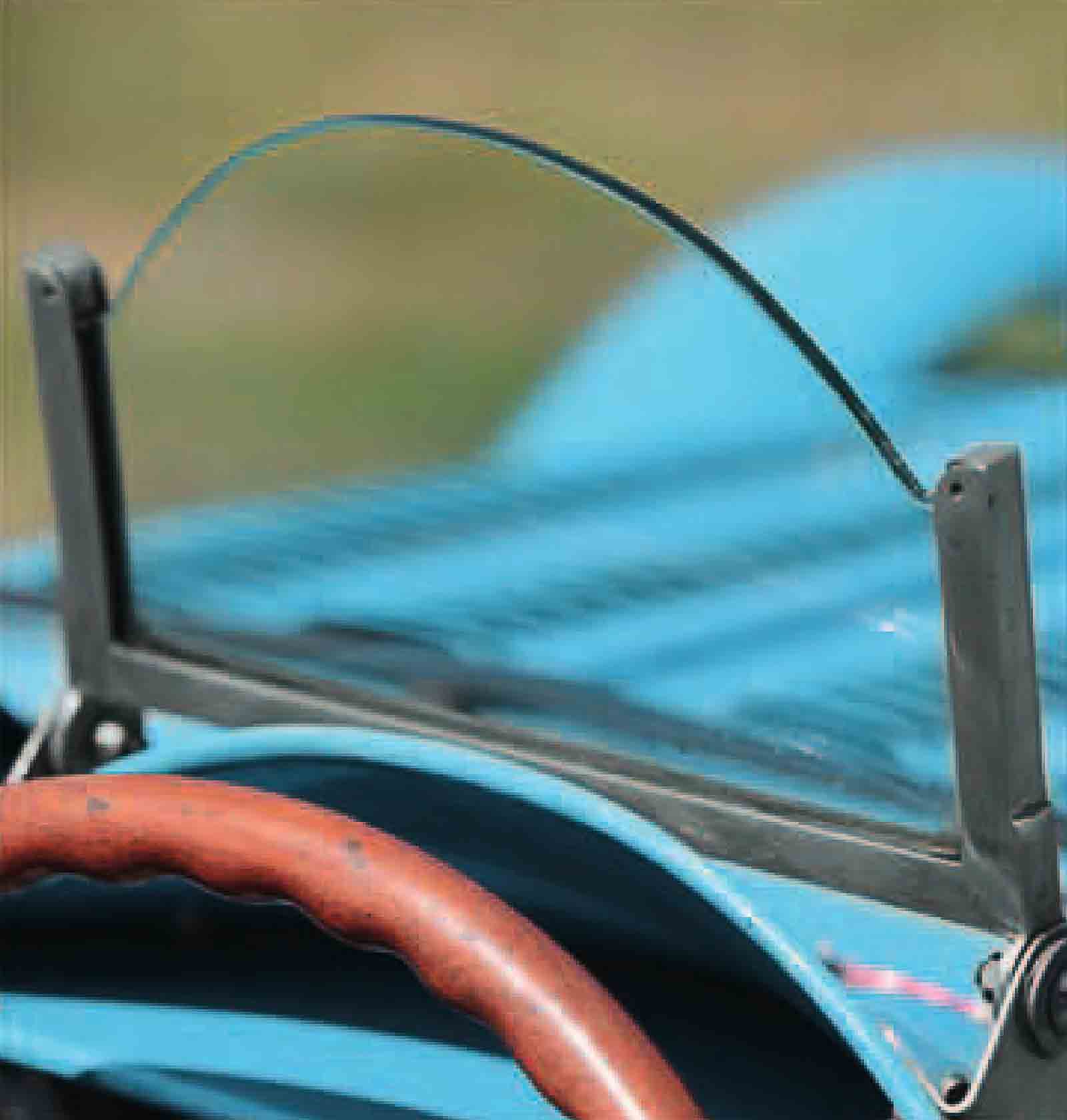
Windshield is the only weather protection
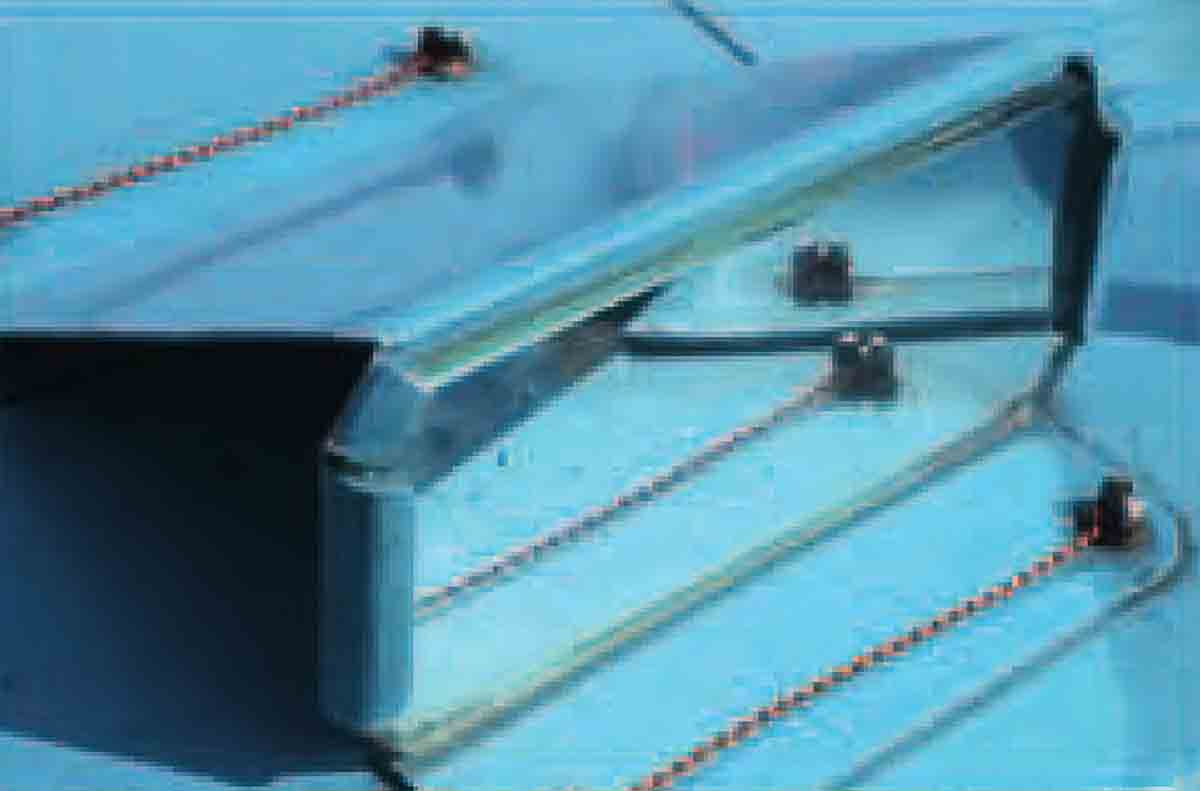
Rear-view mirror is cowled
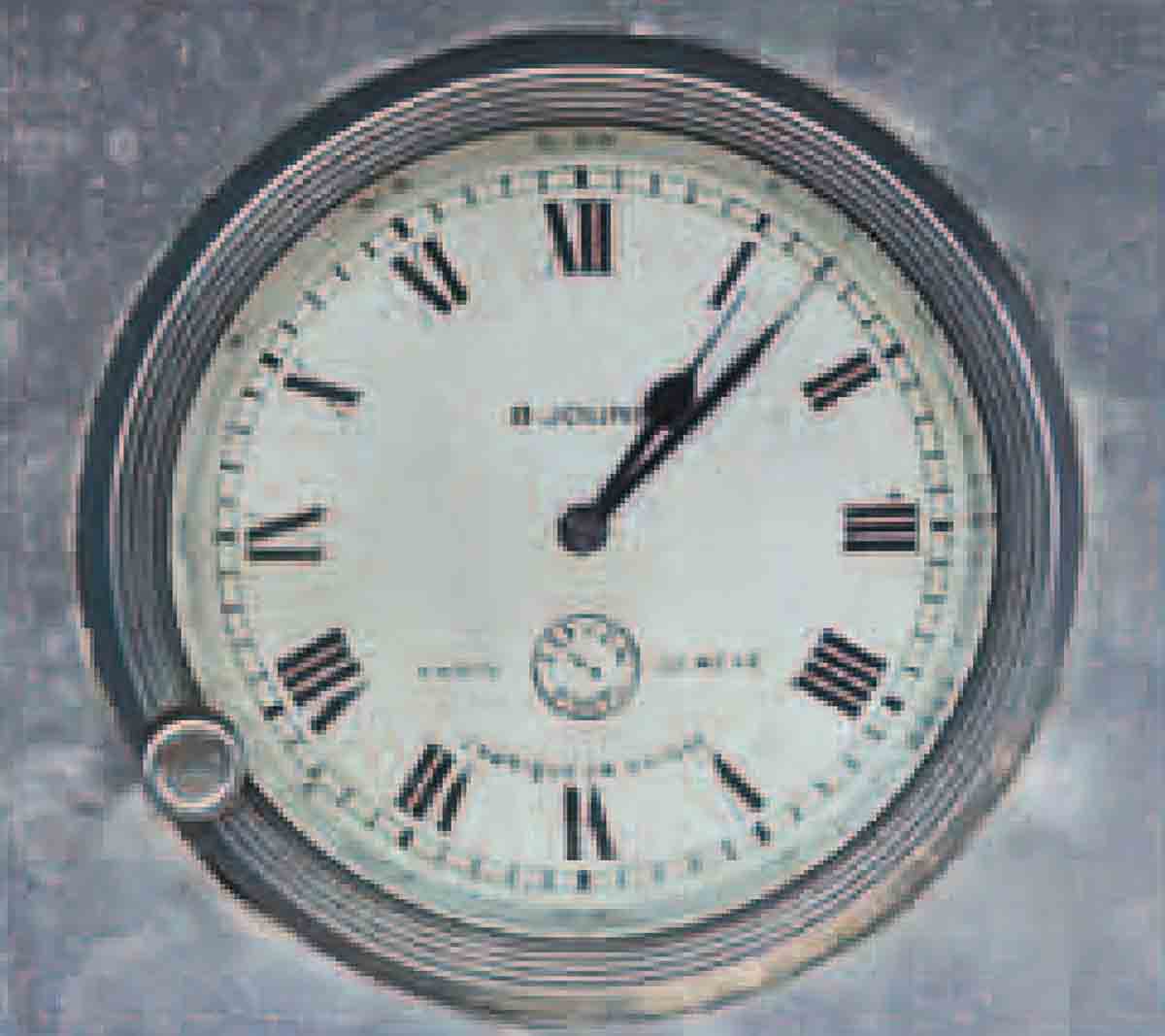
Dashboard clock is typical Bugatti feature
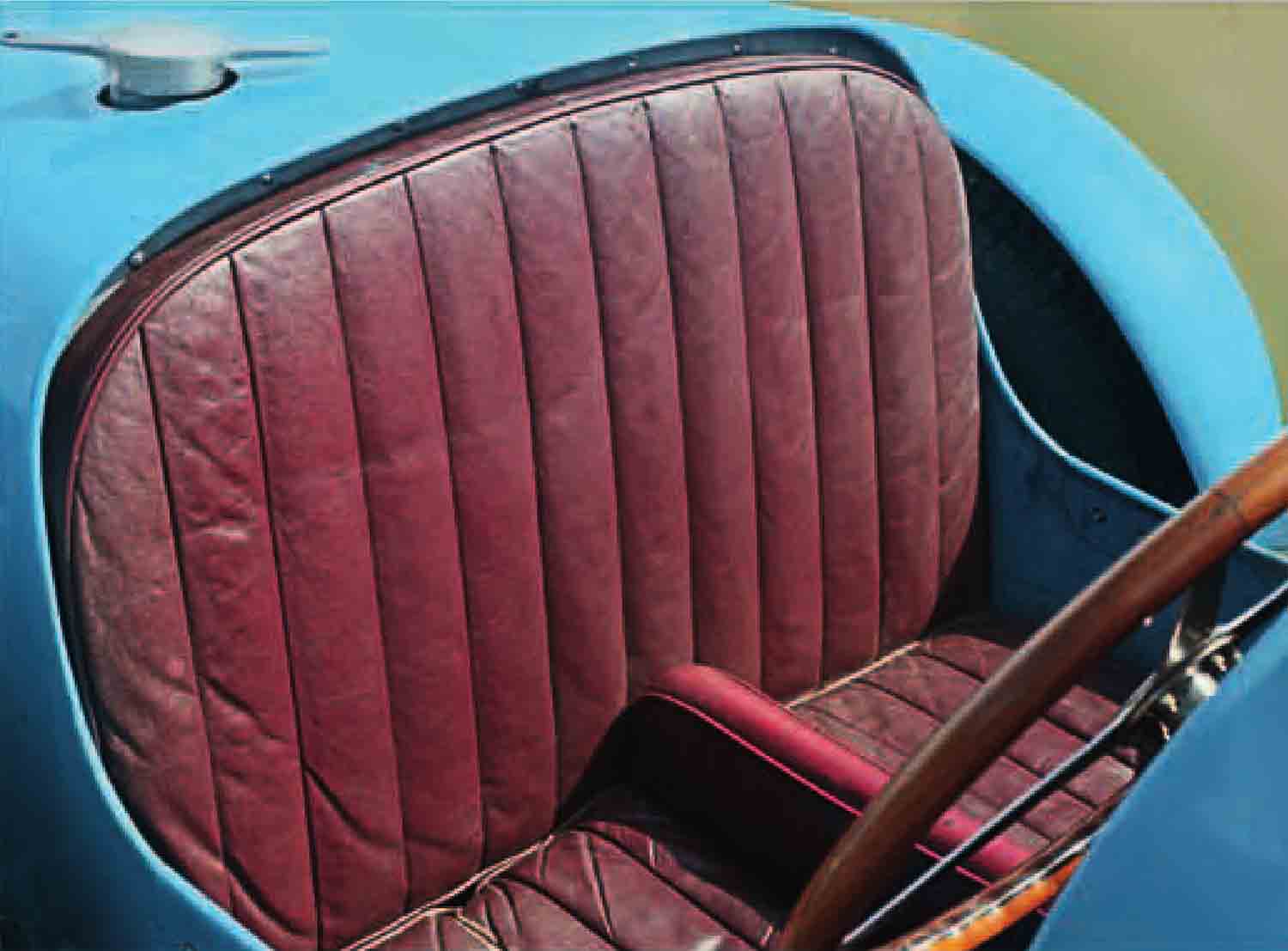
Cockpit is basic, with dark tan leather seats
UNDER THE HOOD
Blistering performance—even by today’s standards—is a given with the supercharged Bugatti. Helping to achieve this is the overhead-camshaft configuration and the use of three valves (two inlet and one exhaust) per cylinder. Free-revving reliability is assured by the use of roller-bearing and ball-bearing mains for the five-bearing crankshaft; the big ends also use roller bearings. Power is transmitted via a multi-plate clutch running in oil
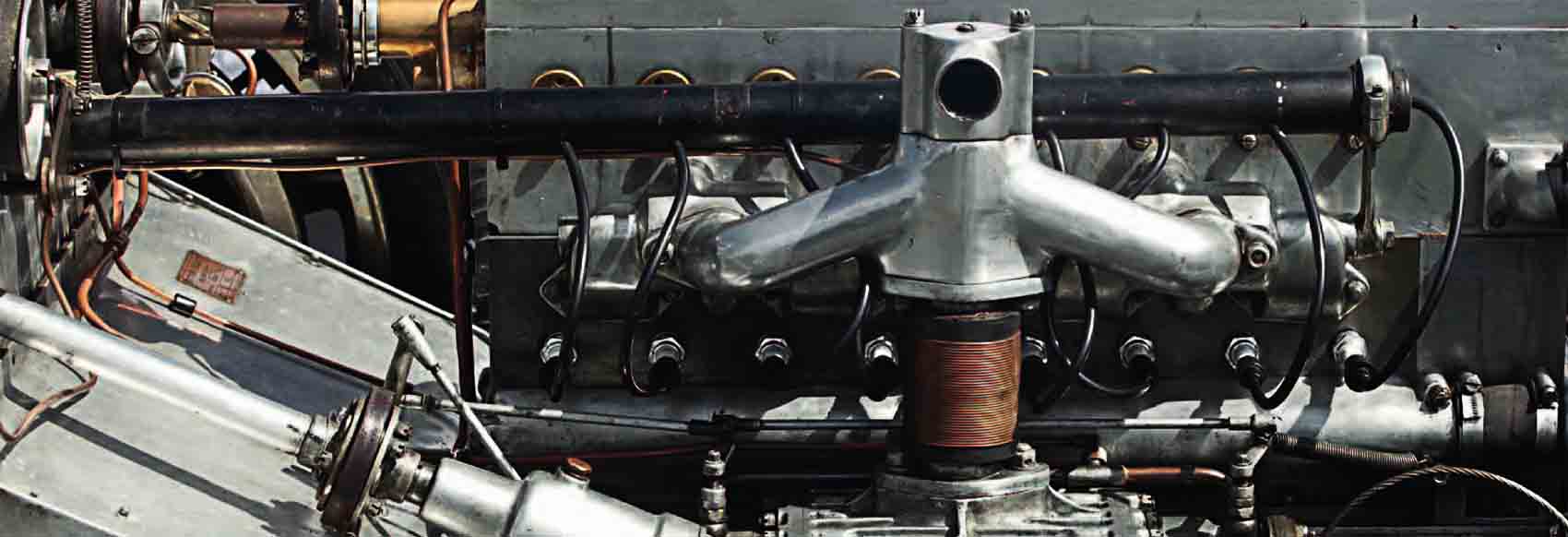
Sculptural straight-eight has single overhead camshaft
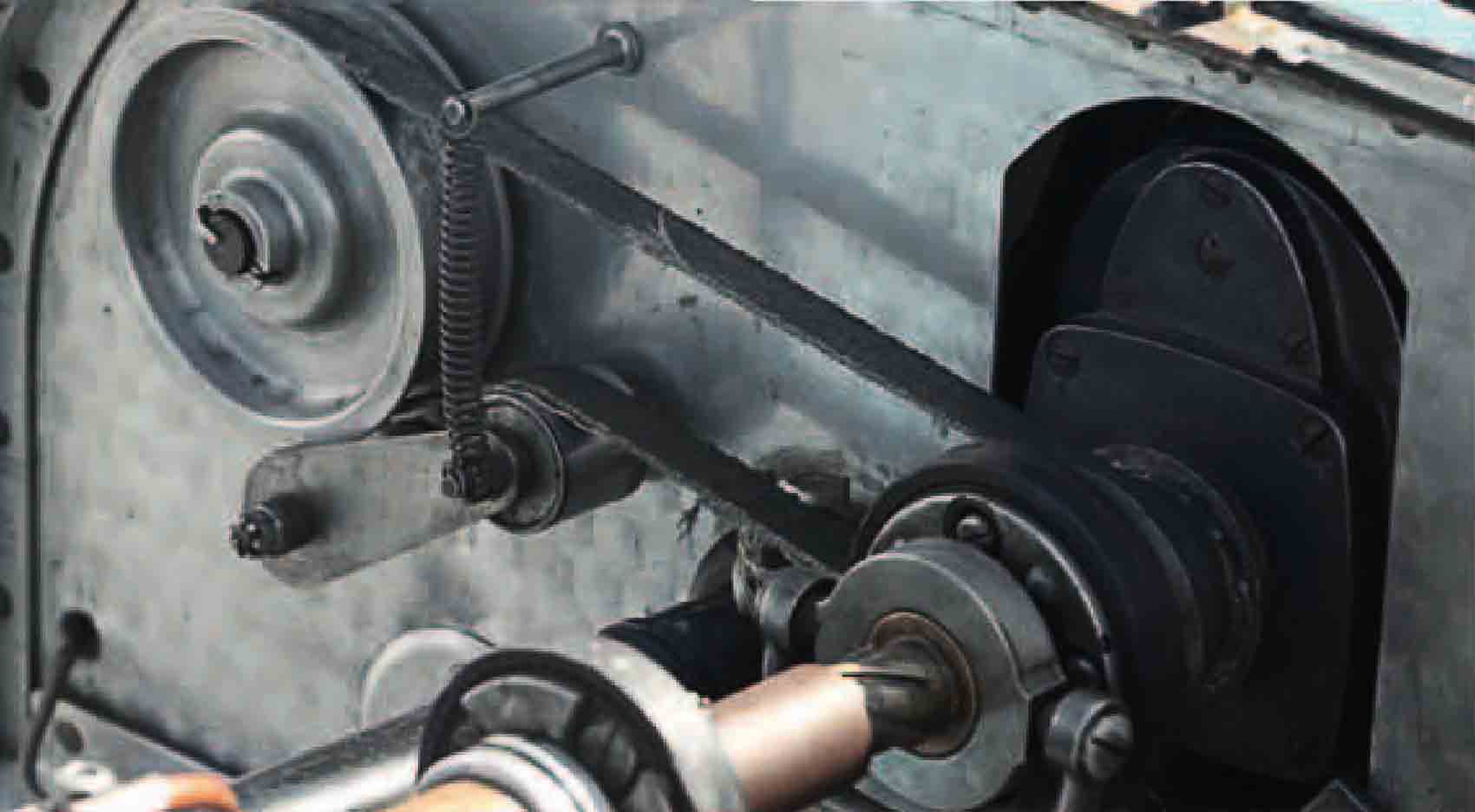
Magneto is driven off end of camshaft
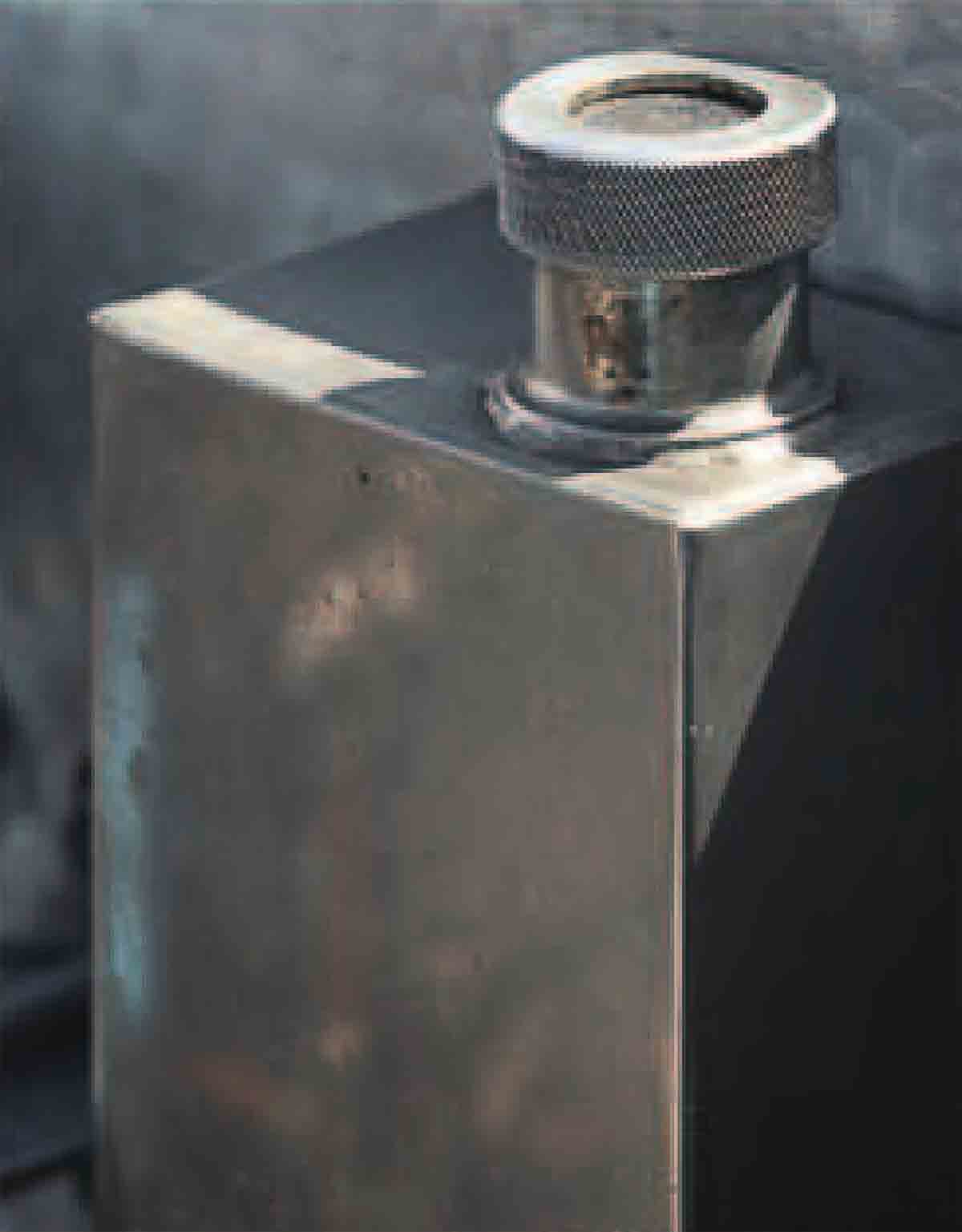
Supercharger has separate oil tank
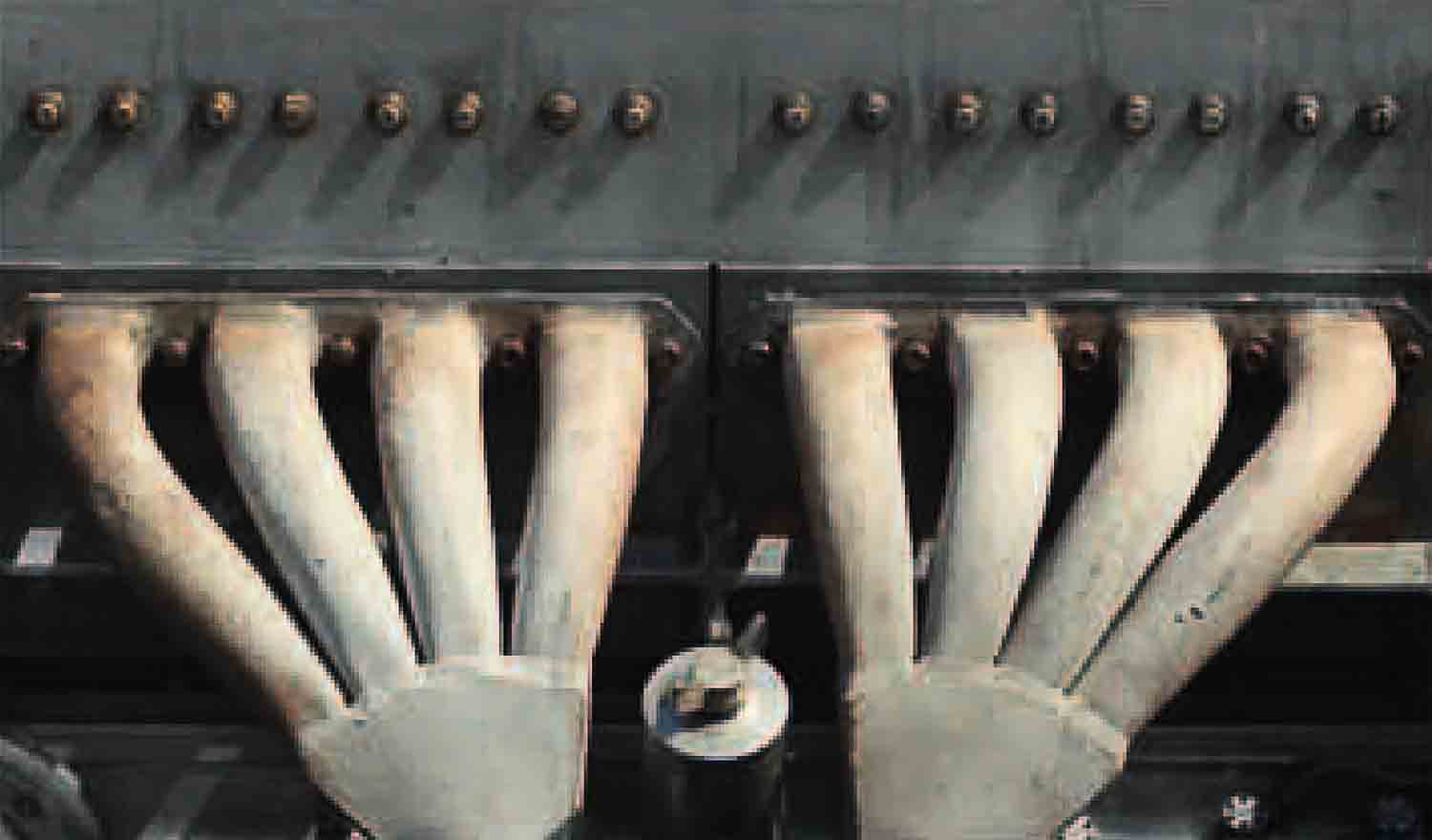
Block is cast in two four-cylinder units
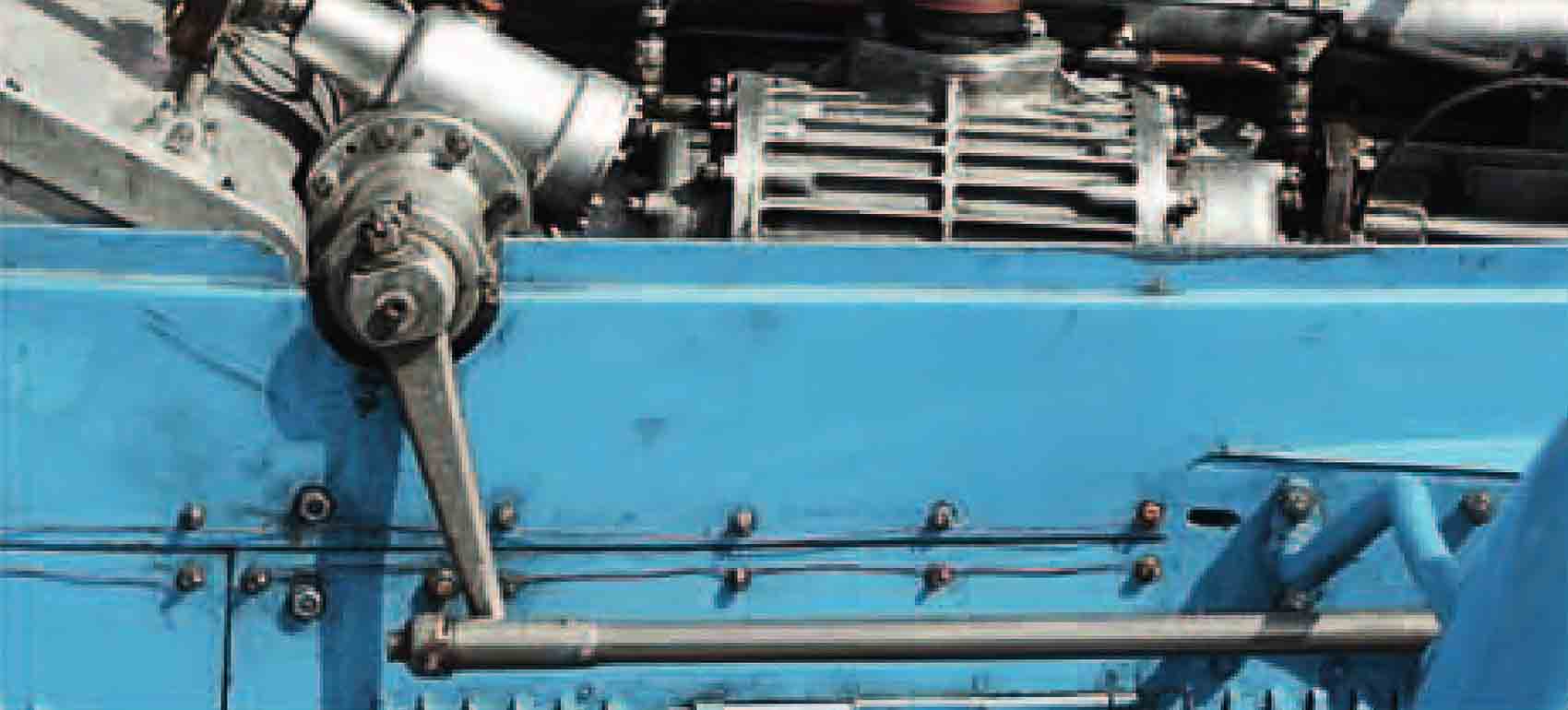
Steering box known for its robustness has worm and helical wheel
It is a quote. The Definitive Visual History Of The Automobile 2011




